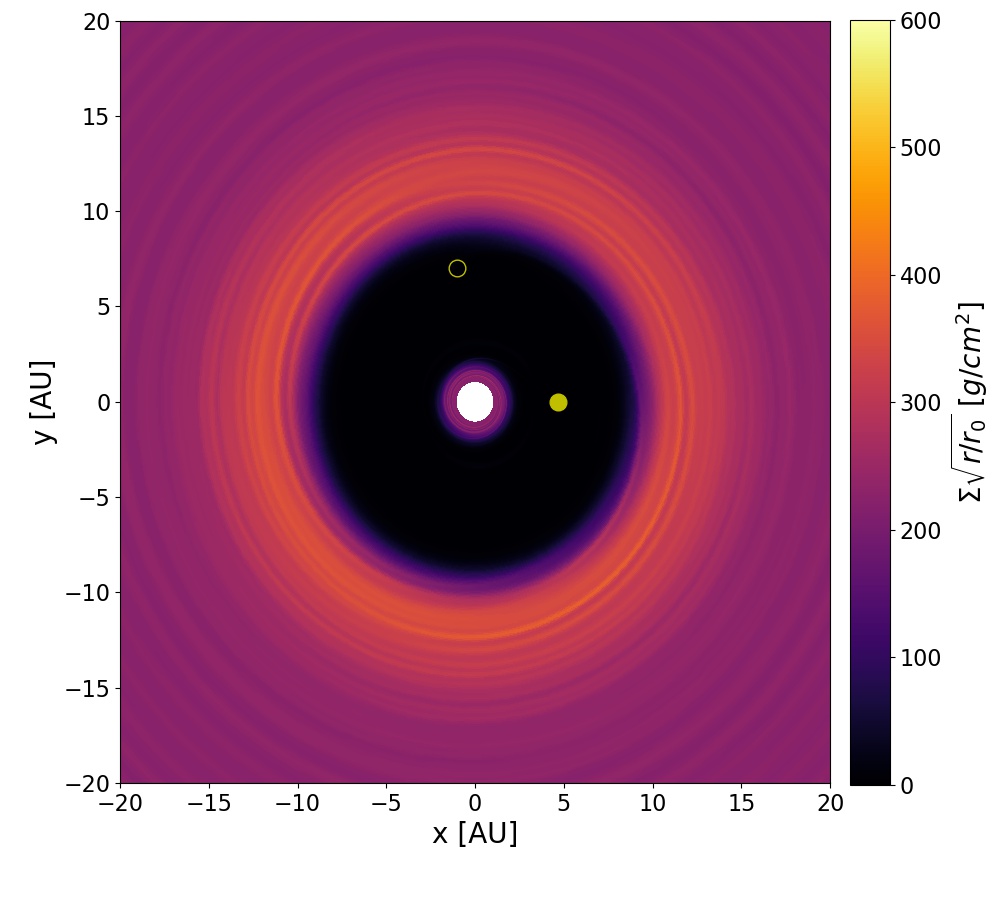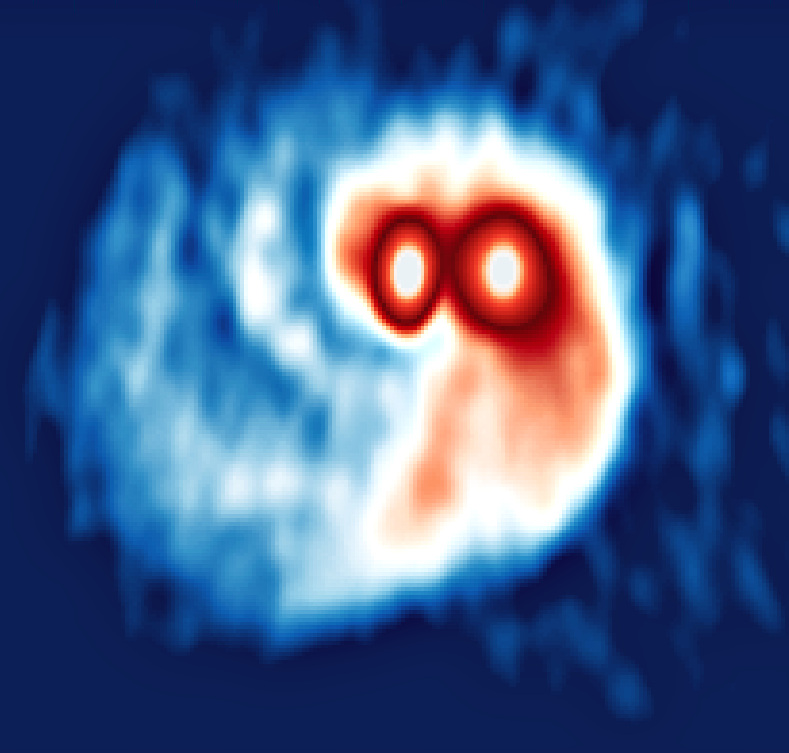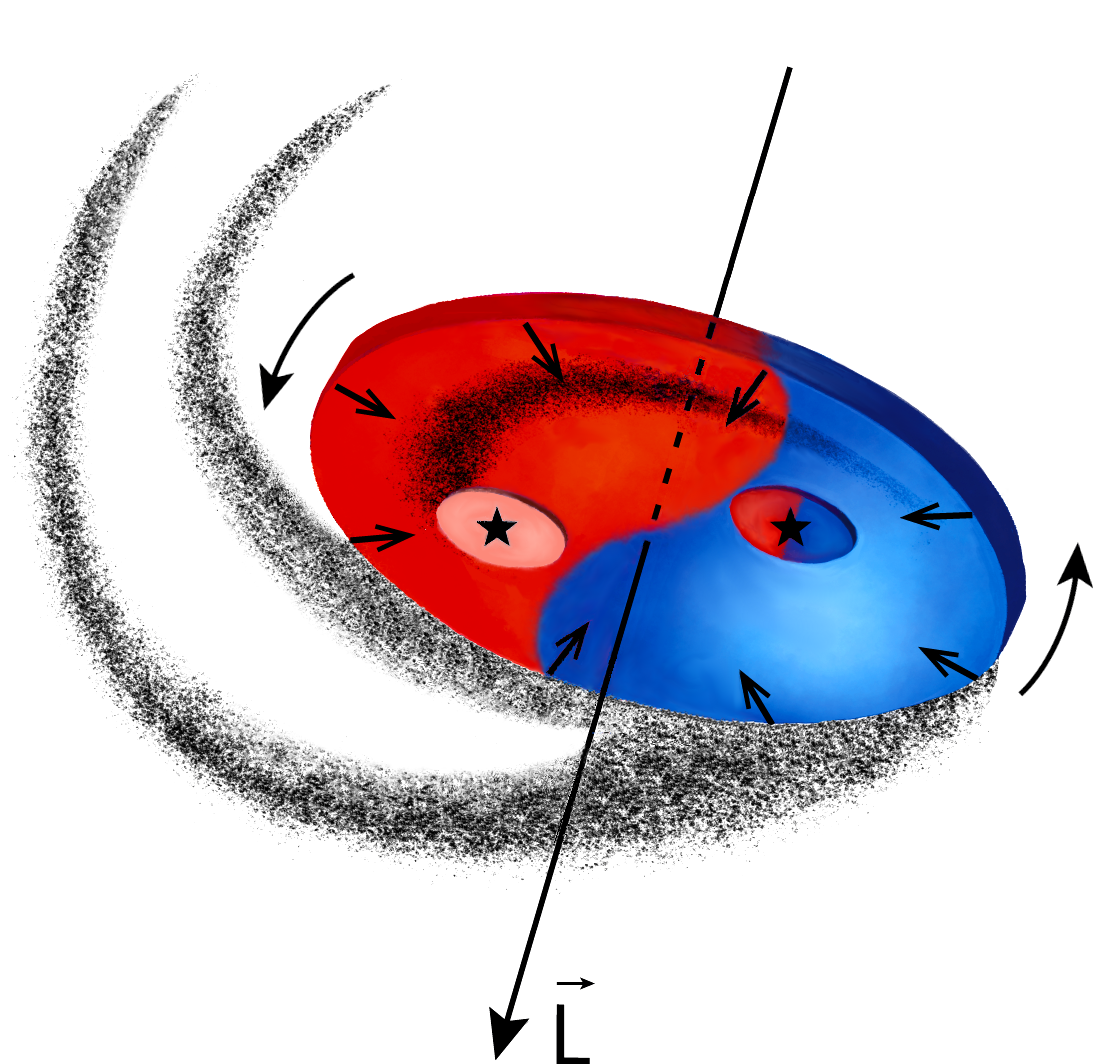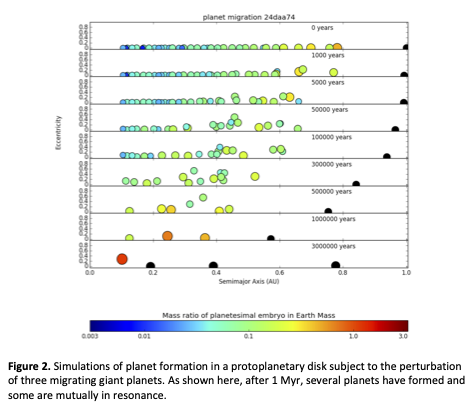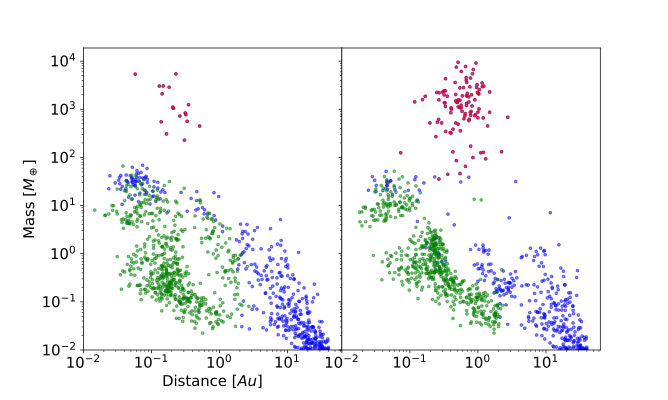1. Introduction
About 50 % [1] of solar-like stars are part of binary star systems. From the nearly 5000 exoplanet candidates only about 2171 are part of a binary or multiple star systems. Inclined planets have been found in circumbinary motion, nevertheless, there are also planets in circumstellar motion which indicate inclinations. Like in the binary star systems HIP 94235 b [2] (recent) and 55 Cnc e [3].
In this study, we want to investigate the late stage of terrestrial planet formation in S-type motion in close binary star systems with a focus on the evolution of the planetesimal disk.
1https://www.univie.ac.at/adg/schwarz/multiple.html
2. Methods and Setup
To solve the equations of motion the Bulirsch-Stoer (BS) method is applied. As the n-body problem scales with O(N2) the BS method has been heavily parallelized on GPUs. As a first approximation for the collisions the so-called “perfect merging“ has been applied. In our numerical study, the interaction of some thousands disk objects are studied for 1 Myrs.
For an equal mass G-type binary star the following star parameters have been varied: ab , eb , and ib. The circumprimary disk consists of some tens of planetary embryos and 2000 planetesimals and extends between 1 and 4 au. The disk is initially dynamically cold and is within the area of stable motion [4]. The different configurations have been simulated for a time of 1 Myr each. For some selected configurations we increased the simulation time for 10 Myr.
3. Results
The wider binary (100 , 150 au) configurations show a bend in the inclination (see figure 1). The location of the bend is closer to the primary for the 100 au (∼ 2.0 au) case than in the 150 au (∼ 2.5 au) case. Additionally, in the 100 au binary star, the innermost embryos reach inclinations up to ∼ 50° compared to ∼ 30° in the 150 au binary system.
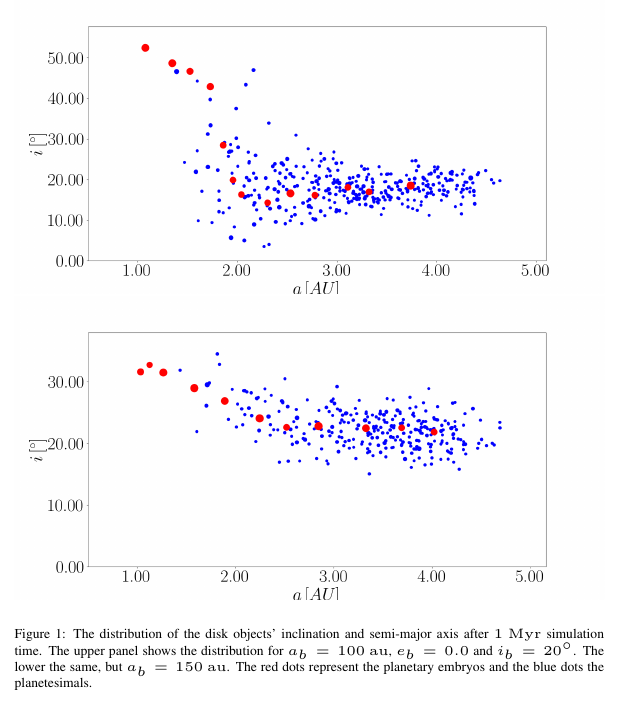
For a binary separation of 60 au the distribution of the disk objects in a and i shows some kind of wave structure within the first 200 kyrs (see figure 2). After 400 kyrs the structure is barely visible and after 600 kyrs the structure clearly disappeared.
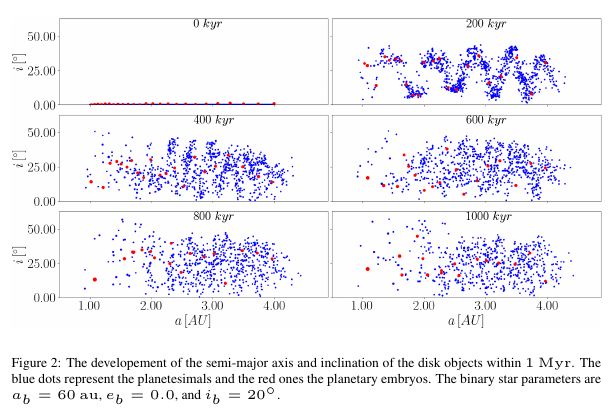
For inclinations ib > 45° the planetary embryos tend to migrate inwards. While the inner embryos (< 1 au) finish their migration within 1 Myr, the outermost objects (3 − 4 au) show migration tendecies within the full 10 Myr (see figure 3).

4. Summary and Conclusions
The developement of a planetesimal disk in S-type motion depends strongly on the binary system parameters. In close (30 & 60 au) systems the disk objects show a wave structure of the inclined objects with respect to the semi-major axis within the first 200 kyrs. The disk objects are likely to oscillate between 0° and ∼ 2 · ib. The frequency of the oscillation depends on the semi-major axis of the disk objects, as well as on the inclination and the seperation of the binary stars [5]. This indicates that this structure will dissolve over time as well as the point in time at which this will occur.
Inclinations of the secondary above 45° show an inward migration of the planetary embryos. The resulting semi-major axis is smaller for higher ib. Moreover, the innermost objects start the migration at an earlier time than the outer ones.
Acknowledgements
M.Z. and E.P-L want to acknowledge the support by the Austrian FWF - project no. P33351-N and S11608-N16. The simulations were performed on the VSC3 (project 71686).
References
[1] Raghavan, D., et al.: A survey of stellar families: Multiplicity of solar-type stars, Astrophys. Journal, Suppl. Ser. 190.1 pp. 1-42, 2010
[2] Zhou, G., Wirth, C., Huang, C., et al.: A Mini-Neptune from TESS and CHEOPS Around the 120 Myr Old AB Dor member HIP 94235, accepted for publication in Astrophys. Journal
[3] Kaib, N., Raymond, S., Duncan M.: 55 CANCRI: A coplanar planetary system that is likely misaligned with its star, Astrophys. J. Lett. 742.2 pp. 1-16, 2011
[4] Pilat-Lohinger, E. and Dvorak, R.: Stability of S-type orbits in binaries. Celestial Mechanics and Dynamical Astronomy 82.2, pp. 143-153, 2002
[5] Roisin, A., Teyssandier, J. and Libert, A.: Planetary migration in precessing disks for S-type wide binaries, Monthly Notices of the Royal Astronomical Society, 506.4, pp. 5005-5014, 2021


